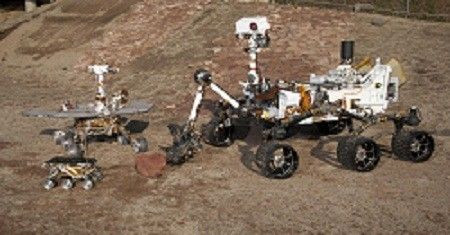NASA Prototype Rover Junior Arrives In New Zealand

A team of NASA scientists has arrived in New Zealand for the first time as part of the Spaceward Bound project to educate people around the world. The scientists brought with them a prototype rover Junior.
Established in 2006, the NASA project is an outreach initiative seeking to educate people around the world. Professor Steve Pointing of Auckland University of Technology said the visit of NASA scientists is an honour for the country as it will help put New Zealand on the map of space research, 3News reported.
Haritina Mogosanu, New Zealand Astrobiology Initiative head, found the NASA project "exciting." She said she heard about the project in 2011 and wanted to have it in New Zealand. The project's goal is pass on knowledge from NASA scientists to college students and eventually to schoolchildren.
Pointing said science is one of the subjects educators want children to be interested in as it combines several disciplines from biology, chemistry, physics, robotics and engineering. While rover Junior is in New Zealand, it will be used for tests on Rotorua's hot springs like the ones conducted by rovers Curiosity and Opportunity on Mars in search for signs of alien life.
NASA astrobiologist Jan Blank said he and his fellow scientists were excited to be in New Zealand to explore the country's geological and microbiology features. He added that New Zealand is ideal for planetary analogue environments.
Behind rover Junior's technology is David Wilson, a NASA mechanical engineer. He explained that on Mars, commands take at least 20 minutes for the robot to receive. It takes technical expertise and timing to prevent the robot from moving too fast or falling off a cliff. He said that although the prototype will not be sent to Mars, it still has a role to play for NASA.
Meanwhile, NASA's probe has closed in on dwarf planet Ceres. New York Times reported that NASA Dawn spacecraft has captured images of Ceres, the largest asteroid between Mars and Jupiter. Marc Rayman, chief engineer of the spacecraft, said Ceres is 600 miles wide and 38 percent of the area is like the continental United States.
The photos of the dwarf planet are expected to get clearer as Dawn moves closer to Ceres. The spacecraft is expected to visit the dwarf planet as the mission will continue for 16 months.
To report problems or leave feedback for this article, contact: r.su@ibtimes.com.au





















